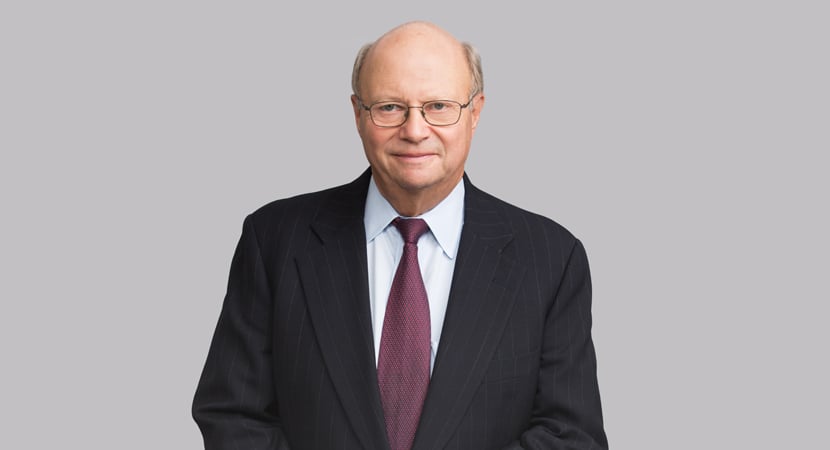In first major decision regarding copyright liability for AI developers, district court holds on summary judgment that creator of AI-powered legal research tool infringed copyrights in thousands of Westlaw headnotes used in training data, rejecting fair use defense as matter of law.
In December 2020, Thomson Reuters, owner of the ubiquitous legal research platform Westlaw, sued AI startup Ross Intelligence, claiming that Ross had unlawfully used Westlaw’s proprietary headnotes—summaries of key points of law derived from published court opinions—to build an AI-powered legal search engine designed to compete directly with Westlaw. According to Thomson Reuters, Ross had initially asked to license its Westlaw content to train its AI search tool, but Thomson Reuters declined. Instead, Ross engaged a third-party company, LegalEase, to create so-called bulk memos that largely incorporated Westlaw’s headnotes and that were in turn used to train Ross’ search tool. Ross’ tool did not employ generative AI. Rather, the tool was created to field legal questions and output elements of already-published court opinions, which, as government works, are not protected by copyright.
Ross, in response, raised various defenses to Thomson Reuters’ copyright infringement claim, including, principally, fair use. Thomson Reuters subsequently moved for partial summary judgment on direct copyright infringement and several related defenses, and Ross moved for summary judgment on Thomson Reuters’ copyright claims. Both sides also moved for summary judgment on fair use.
In September 2023, the court initially denied the parties’ cross-motions for summary judgment in substantial part, holding that there were factual issues as to whether the headnotes were sufficiently original to warrant copyright protection, as well as factual issues on various elements of Ross’ fair use defense. (Read our summary of the court’s earlier decision here.) However, in the run-up to the trial, which had initially been scheduled for August 2024, the court continued the trial date and requested that the parties submit additional summary judgment briefing. In reconsidering its earlier summary judgment decision sua sponte, the court reversed course in several important respects.
First, the court granted Thomson Reuters’ motion for partial summary judgment on its direct copyright infringement claim in substantial part, holding that Ross had infringed over 2,000 Westlaw headnotes. In doing so, the court held that those headnotes were sufficiently original to warrant copyright protection. Although a headnote is derived from uncopyrightable judicial opinions, the court noted that it “can introduce creativity by distilling, synthesizing, or explaining part of an opinion.” The selection and arrangement of facts in a headnote could also be sufficiently original to be copyrightable, the court held. As to Westlaw’s Key Number System, the court held that even if that system was largely operated by a computer program, Thomson Reuters’ organization of legal topics by key number was nonetheless sufficiently original to be copyrightable, noting that originality, not effort, is the appropriate test for copyrightability.
The court then considered whether the LegalEase bulk memos actually copied and were substantially similar to the Westlaw headnotes. Having considered 2,830 headnotes that were properly before the court on summary judgment, the court held that 2,243 were actually copied and substantially similar to the bulk memos. However, it left for trial the question as to whether the balance of those headnotes and the Key Number System were infringed, given unresolved factual questions regarding whether they had actually been copied.
Further departing from its earlier decision, the court held that Ross’ use of the headnotes did not constitute fair use as a matter of law.
The first fair use factor—the purpose and character of the use—weighed in favor of Thompson Reuters, the court held. Following the U.S. Supreme Court’s guidance in Andy Warhol Foundation for the Visual Arts, Inc. v. Goldsmith, the court determined that Ross’ use of the headnotes was “commercial” in nature and did not have a “further purpose or different character” from Thomson Reuters’ because Ross had used the headnotes to create a tool that would directly compete with Westlaw.
The court was not swayed by Ross’ argument that its copying occurred at an “intermediate step” in the creation of its final product, i.e., that Ross “turned the headnotes into numerical data about relationships among legal words to feed into its AI” but never displayed the headnotes as part of any search tool output. Ross had relied on a line of previous cases in which courts permitted the intermediate copying of computer code where necessary to ensure new computer programs were compatible with existing technology—essentially where “the copying was necessary for competitors to innovate.” But the court held that this rationale applied only to computer-programming copying cases.
For example, the court distinguished the U.S. Supreme Court’s decision in Google v. Oracle, in which Google’s copying of 11,500 lines of code from Oracle’s Java SE program was determined to be fair use because, in that case, the code was necessary for different programs to speak to one another, whereas here it was not reasonably necessary for Ross to copy the headnotes to create its competing product. Quoting from Google, the court observed: “In copyright, ‘computer programs differ from books, films, and many other literary works in that such programs almost always serve functional purposes.’ So the fair-use considerations for these programs do not always apply to cases about copying written words.”
The court, however, was careful to note that its rationale may not apply to fair use arguments regarding generative AI, warning, “Because the AI landscape is changing rapidly, I note for readers that only non-generative AI is before me today.”
The second fair use factor—the nature of the copyrighted work—weighed in favor of Ross. The court held that although Westlaw’s headnotes cleared the low bar of originality required for copyright protection, “the material is not that creative.” Although the headnotes required editorial creativity and judgment, that creativity was less than that of a novelist or artist drafting a work from scratch, the court opined. Similarly, because Westlaw’s Key Number System is a factual compilation, its creativity was limited as well.
Despite holding that this factor favored Ross, however, the court noted that this factor “has rarely played a significant role in the determination of a fair use dispute.”
The third fair use factor—the amount and substantiality of the work used in relation to the whole—also weighed in favor of Ross because none of the headnotes appeared in outputs to end users of Ross’ search tool. The court noted that what matters is not the amount and substantiality of the portion used “in making a copy” but rather the amount and substantiality of what is “made accessible” to the public.
The fourth fair use factor—the effect of the use on the potential market for or value of the copyrighted work—which the court deemed “the single most important element of fair use,” weighed decisively in favor of Thompson Reuters. The court emphasized that Ross’ product was intended to serve as a “market substitute” for Westlaw and thus could adversely impact a potential derivative market for Thomson Reuters to license its headnotes as AI training data. Although there was a possible public benefit to accessing information about legal opinions, that benefit should not impact the analysis on the fourth factor, the court held. As it explained, “The public has no right to Thomson Reuters’s parsing of the law. Copyrights encourage people to develop things that help society, like good legal-research tools. Their builders earn the right to be paid accordingly.”
Weighing these factors, and considering the greater importance of factors one and four, the court held that Ross’ use of the headnotes did not constitute fair use and granted summary judgment for Thomson Reuters on that defense.
Summary prepared by Frank D’Angelo and Erin Shields
-
 Partner
Partner -
 Associate
Associate
)



